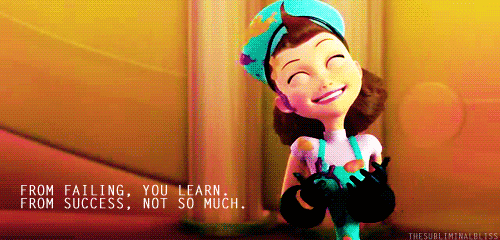One of my favorite movies is Disney's Meet the Robinsons. Not only is it one of Disney's funniest, it has some wonderful commentary on ingenuity and optimism, two things that were very close to Walt Disney's heart. Not to mention, one of my favorite jazz musicians happens to provide the voice for the jazzy frog.
The story is about 12 year old orphan Lewis, a blooming inventor. Convinced there is no one who will adopt him, his life takes a turn for the bizarre when he is approached by Wilbur Robinson, a child from the future. He takes Lewis to the future, and there he learns much about attitude, ingenuity, and family.
The movie is jam-packed with little hidden morals. In one scene, Lewis is eating dinner with the Robinsons, and they ask him to repair a broken PB&J machine. His confidence as an inventor is at a low in this part of the movie, so he initially refuses. But after being pressured into it by the quirky family, he promptly fails, and PB&J is spread everywhere, all over the walls and over everyone. It is a total mess.
Initially, Lewis cowers, and expects everyone to be angry at his failure. But the do just the opposite. They celebrate it. Why? Because from failure, you learn. From success, not so much.
I love this attitude. Failure is not something to look down upon, as long as the person is trying. Failure sucks, but instructs. Whether or not you let it stop you is all a matter of attitude.
I find I need to constantly remind myself of that. A maximizer, it is natural for me to worry about the choices I have made, and wonder if they truly were the best. This is especially relevant at the close of a semester...the best thing to do is reflect on what you have learned, and keep your eyes on the future. Don't get caught up in the small failures.
"Around here, however, we don't look backwards for very long. We keep moving forward, opening up new doors, doing new things, because we're curios. And curiosity keeps leading us down new paths."
- Walt Disney















